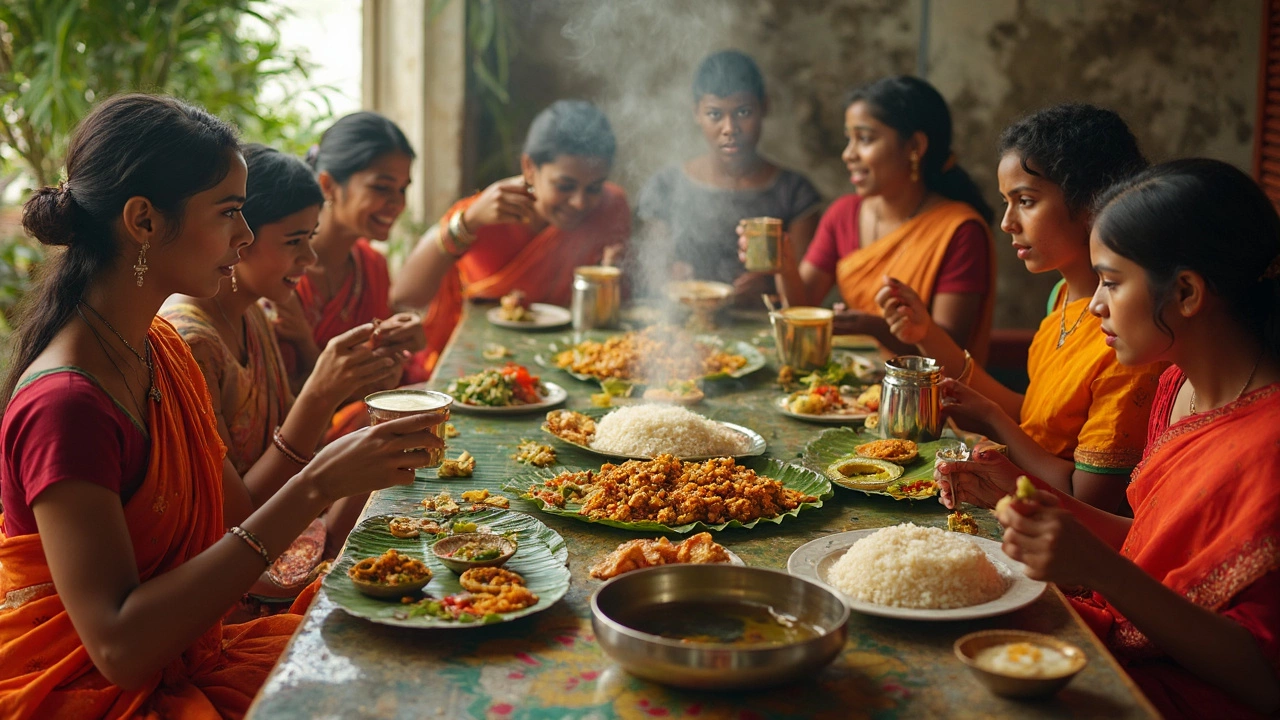SEARCH
South Indian Lunch: What to Eat, Where to Find It & How Much It Costs
Thinking about a South Indian lunch? You’re in for a treat that’s fresh, flavorful and easy on the wallet. From the crispy rice‑ball marvels of Karnataka to the tangy coconut curries of Kerala, each state adds its own spin. This guide shows you the dishes you shouldn’t miss, where to grab a good plate, and simple tips to keep the bill low.
Typical South Indian Lunch Dishes
Most lunches start with a base of rice or flatbread. In Tamil Nadu you’ll often see rice served with sambar, rasam and a side of poriyal (stir‑fried veggies). Add a dollop of curd or a spoonful of pickle and you’ve got a balanced meal. Kerala leans heavy on coconut: think appam with stew or puttu with kadala curry. Karnataka lovers swear by bisibele bhath, a spicy rice‑lentil mix topped with ghee and fried peanuts.
Don’t forget the small plates that make lunch feel like a feast. Idli and vada are steam‑cooked and fried rice cakes that pair perfectly with chutney. Dosa comes in many shapes – plain, masala (filled with spiced potatoes) or rava (made from semolina). If you’re near the coast, a serving of fish fry or prawn masala adds protein without heaviness.
Most places serve a sweet finish. A tiny bowl of payasam (milk‑based rice pudding) or a piece of halwa rounds off the meal. These sweets are usually simple, made with jaggery or coconut, so they don’t feel over‑rich.
Finding Good Lunch Spots & Saving Money
Street stalls and small family eateries are the best bet for authentic flavors and low prices. In most towns you’ll spot a line of metal chairs, a chalkboard menu and a sizzling pan – that’s a sign of a good lunch spot. Ask locals where they eat; they’ll point you to places that tourists often miss.
If you’re staying in a hotel, use the dining room for breakfast and head out for lunch. You’ll get a break from the hotel price tag and still keep the day’s schedule simple. Many restaurants offer a "lunch thali" – a single plate that bundles rice, sambar, rasam, vegetables, curd and a small dessert for one set price. Thalis usually range from INR 80 to INR 250, depending on the city.
Timing matters. Lunch crowds peak between 12 pm and 2 pm. Arriving a little earlier (around 11:30 am) often means fresher food and a chance to snag the best seats. Some places also have "early‑bird" discounts before the rush.
Watch the extras. Coconut chutney, extra ghee, or a second round of rasam can add up. Ask if the side dishes are included in the price; most thalis are all‑in‑one, but some street stalls charge per chutney.
Finally, stay hydrated with water or a simple buttermilk (meni). It’s cheaper than soda and helps balance the spices. If you want a drink with a local vibe, try a glass of fresh tender coconut water – it’s cheap in beach towns and great for digestion.
With these pointers, you can enjoy a hearty South Indian lunch that satisfies your taste buds and your budget. Grab a plate, savor the spices, and let the flavors of the South keep you energized for the rest of your adventure.

Typical South Indian Lunch: What to Expect on Your Plate
Curious about what locals eat for lunch in South India? This article breaks down a classic South Indian lunch plate, including the essential dishes, eating habits, and small tips that make the meal truly local. Find out what flavors and textures to expect, and learn why this midday meal looks nothing like you’ll find in the north. Grab tips for ordering at restaurants and picking up on mealtime rituals. Perfect for travelers or foodies who want to experience the real taste of the south.
Continue reading